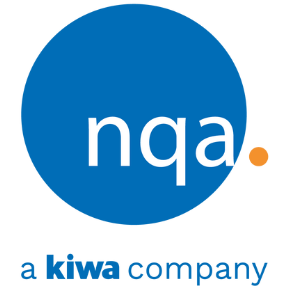ISO 45001: New Concepts and Critical Clauses
This approach has been strengthened with the publication of ISO 45001 in March 2018. Not only does ISO 45001 have the Annex SL structure, it brings with it the enhancements and new concepts of Context and Leadership. Both of these elements are building on the foundations laid by BS OHSAS 18001:2007.
ISO 45001:2018 is a completely new standard and there have been changes and enhancements throughout so let’s take a look at some of the elements in relation to OHS systems in sections 4 and 5 of the standard.
Section 4
Context of the Organization:
The intended outcomes for an organization (as documented in ISO 45001:2018) include:
- Continual improvement of the OHS performance (not continuous improvement)
- Fulfilment of legal and other requirements
- Achievement of OHS objectives
To enable this to be achieved, an organization must determine internal and external issues which are relevant to its purpose and that affect its ability to achieve the intended outcomes.
Workers are at the core of this standard as they are the primary interested party which it aims to protect.
It’s important to note here that the term ‘worker’ also includes agency and contractors, as well as directly employed staff at all levels.
Interested parties also includes a wide range of other people including visitors, shareholders, suppliers, enforcement agencies/regulators and local residents.
What are the needs and expectations of these ‘interested parties’ in relation to the OHS system?
The scope of the system (applicability and boundaries) needs to be documented information which is available to the interested parties. It should also consider the internal/external issues and the requirements of interested parties in relation to its planned and performed work – related activities, e.g. what is the organization planning or actually doing as work activity?
As this element may not be static – Context is a dynamic activity for an organization to consider and be able to demonstrate.
Section 5
Leadership and Worker Participation
The requirements within the standard are many and varied and these have been sub-divided in to clauses:
5.1 – Leadership and Commitment:
Top management shall demonstrate leadership by taking overall responsibility and accountability for the prevention of work-related injury and ill-health as well as the provision of safe and healthy workplaces and activities.
This requirement is then supported by twelve clauses relating to:
- Integration of the OHS system in to the organizations business processes
- Provision of resources
- Communications – both internal and external
- Achievement of planned outcomes
- Directing and supporting persons
- Continual improvement
- Supporting management roles in OHS applicable to their areas of responsibility
- Developing a culture that supports the intended outcomes of the system and the organization
- Protecting workers from reprisals when reporting OHS incidents, hazards, risks and opportunities
- Ensuring consultation and participation of workers
- Supporting the establishment and functioning of OHS committees
5.2 – OHS Policy:
Top management shall establish, implement and maintain a documented and relevant OHS policy that:
- Commits to provide safe and healthy working conditions for the prevention of work-related injury and ill-health that are appropriate to the purpose, size and context of the organization and to the specific nature of its OHS risks and opportunities.
- Provides a framework setting OHS objectives and plans to achieve them
- Fulfilment of legal and other requirements
- Commitment to eliminate and reduce hazards and risks
- To consult and participate with workers and workers representatives
- Commit to continually improve the OHS system
The policy must be communicated within the organization, and available to interested parties.
5.3 – Organizational roles, responsibilities and authorities:
Top management will ensure that responsibilities and authorities for relevant roles within the OHS system are assigned, communicated throughout and documented. Workers at each level shall assume responsibility for aspects of the OHS system over which they have control.
Top management shall remain ultimately accountable for the OHS functioning of the OHS system.
5.4 – Consultation and participation of workers:
The organization shall establish, implement and maintain processes for consultation and participation of workers at all applicable levels and functions for the development, planning, implementation, performance evaluation and improvement actions of the OHS system.
This consultation with non-managerial workers will include the majority of all standard requirements from needs and expectations and policy to communications, determining controls, investigation, actions and training.
This key requirement is emphasized throughout the standard for an effective OHS management system.
Other sections of the OHS system include:
6 – Planning - including; identification of hazards, risks and opportunities assessment, objectives and plans, determining legal and other requirements
7 – Support - including; resources, competence, awareness, communication and documented information
8 – Operational Planning and Control - including; eliminating hazards and risks, management of change, procurement, contractors, outsourcing and emergency preparedness.
9 – Performance Evaluation - including; monitoring, measurement, analysis and performance evaluation, evaluation of compliance, internal audits and programmes and management review.
10 – Improvement - including; incident, nonconformity and corrective actions and continual improvement.
Claims of conformity to ISO 45001:2018 can only be achieved when all its requirements are incorporated in to the OHS management system and fulfilled without exclusion.
Summary
The ISO 45001 Health & Safety standard is designed to aid the alignment with other ISO business management standards and should be considered as part of the organizations culture of how they operate, and not an add-on or a ‘nice to have’.
Workers are people and are the most adaptive asset within an organization, it is commercially and morally sensible to protect them.
If you'd like to chat to a team member about getting certified to ISO 45001 please get in touch.
